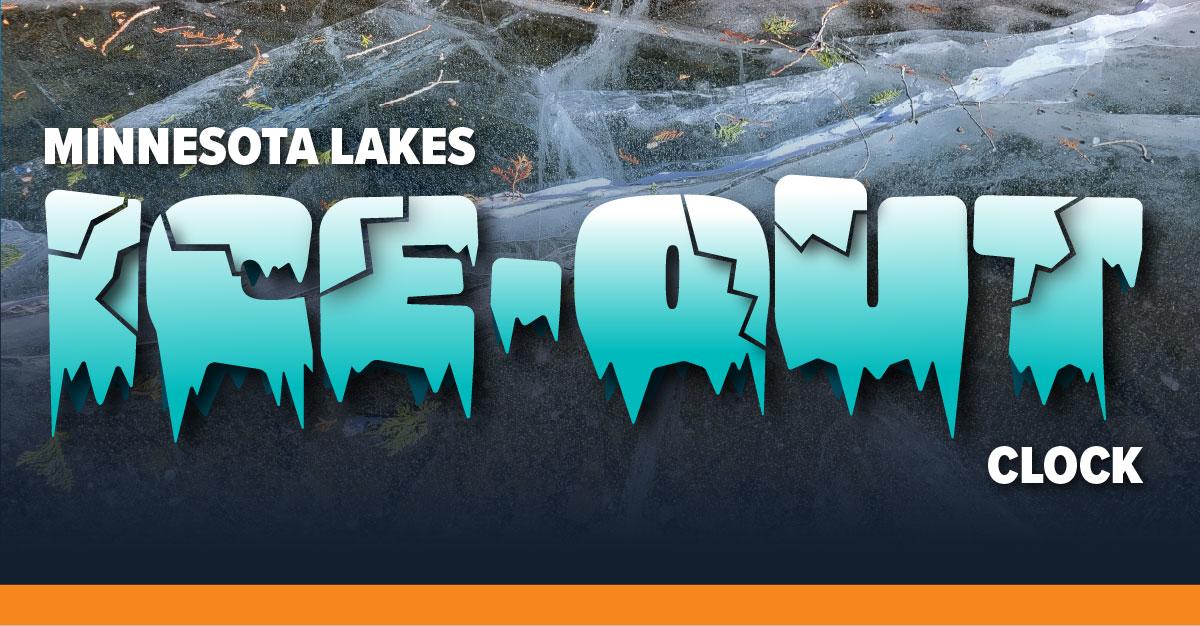Program Staff
Media Mentions
Changed
A Systemwide Program of the University of Minnesota

Minnesota Sea Grant (MNSG) Director John A. Downing wanted a tool for friends, colleagues, family, and businesses that rely on ice-free lakes that each could use to better plan for spring and winter activities. The Minnesota Lakes Ice-Out Clock is a tool that measures the thawing potential that weather exerts on lakes in spring.
The Minnesota Lakes Ice-Out Clock uses a bit of science fun to to estimate when a body of water like a lake is likely to thaw. Decades of historic climate data, and ice-out dates for hundreds of lakes across the state were statistically analyzed to come up with an equation that "fits the data." This equation is used predict this year's ice-out based on the current winter's climate data.
Important Note for 2023-2024 predictions: The forecasts below are made assuming average snowfall in Minnesota. With very low snowfall in 2023-2024, forecasts should be adjusted earlier by up to several days. Also, forecasts are made for the middle of Minnesota, so after considering low snowfall, lakes in the north may have ice-out a few days later than forecast and lakes in the south may have ice-out a few days earlier than forecast.
Data for the Clock. The forecasts generated by our Minnesota Lakes Ice-Out Clock are based on statistical analyses of past National Weather Service (NWS) weather data, ice-out dates recorded by the Minnesota Department of Natural Resources (MNDNR), lake location and size data from the MNDNR, and current season weather information from the NWS. Data back to the winter of 1963-1964 were included in the forecasts.
Accuracy.
Snow. Forecast ice-out dates will be several days earlier if less than average snowfall has been received. Lakes in the northern half of the state may be a few days later than forecast while lakes in the southern half may be a few days earlier than forecast, considering the corrections due to snowfall.
Degree days. We need to explain some science jargon. This clock uses "degree days," which are measures of how cold (Freezing Degree Days) or warm (Thawing Degree Days) a location is. It's helpful to remember that you can have more than one degree day in a 24-hour period. Degree days are the difference between the daily temperature mean (high temperature plus low temperature divided by two) and 65°F.
Degree days for a single (24-hour) day are calculated using the following formulas:
